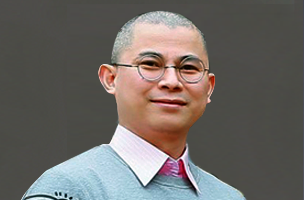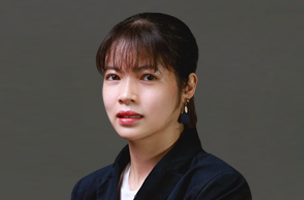Copyright in MYANMAR
Bud & Prairie are profusely expert and experienced to advise and assist you with copyright related matters.
- Current Legal Framework
- Copyright Act of 1911: The existing law is based on the British Copyright Act of 1911, which Myanmar inherited during colonial times. It provides basic copyright protection but lacks many of the features found in more modern copyright regimes.
- Myanmar Copyright Law of 2019: This new law was passed to update the copyright system, although full implementation is still in progress.
- Protected Works
Copyright in Myanmar generally protects the following types of works:
- Literary Works: Books, articles, and other written content.
- Artistic Works: Paintings, drawings, sculptures, and other visual art.
- Musical Works: Compositions, with or without lyrics.
- Dramatic Works: Plays, scripts, and other performance-related content.
- Cinematographic Works: Films and other audiovisual productions.
- Sound Recordings: Audio recordings of music, speeches, and other sounds.
- Broadcasts: Television and radio broadcasts.
- Computer Programs: Software and related digital works.
- Copyright Ownership
- Original Creator: The creator of the work is typically the initial owner of the copyright.
- Work for Hire: If a work is created as part of employment, the employer may own the copyright, depending on the terms of the employment contract.
- Duration of Copyright
- General Duration: Under the old law, copyright typically lasts for the lifetime of the author plus 50 years. However, the 2019 law extends this to the lifetime of the author plus 70 years, aligning with international norms.
- Different Works: The duration for different types of works, such as anonymous works, works for hire, or audiovisual works, may vary.
- Registration
- No Mandatory Registration: Copyright protection in Myanmar is automatic upon the creation of a work and does not require registration. However, registering a copyright can be beneficial in proving ownership and protecting rights in legal disputes.
- New Law Provisions: The 2019 law includes provisions for an optional registration system, which, once implemented, will allow creators to register their works officially.
- Enforcement and Infringement
- Enforcement Challenges: Under the old system, enforcement of copyright has been challenging due to outdated laws, lack of awareness, and limited resources.
- Infringement Actions: The new law strengthens enforcement mechanisms, providing for civil and criminal actions against copyright infringement. Rights holders can seek remedies such as injunctions, damages, and seizure of infringing goods.
- Moral Rights
- The 2019 law recognizes moral rights, which allow authors to protect their personal connection to their work, including the right to attribution and the right to object to derogatory treatment of their work.
- International Treaties
- Berne Convention: Myanmar is not yet a member of the Berne Convention for the Protection of Literary and Artistic Works, but the 2019 law is designed to be compliant with its standards, indicating Myanmar’s intention to possibly join in the future.
- WTO/TRIPS Agreement: Myanmar is a member of the World Trade Organization (WTO) and, as such, is bound by the Trade-Related Aspects of Intellectual Property Rights (TRIPS) Agreement, which sets minimum standards for copyright protection.
The new Myanmar Copyright Law of 2019 represents a significant step forward in providing robust protection for creators and aligning the country with international copyright standards. However, full implementation and effective enforcement will be key to realizing the law’s potential benefits. Given the transition to the new copyright system, it is advisable to seek legal counsel to navigate the complexities and ensure proper protection. In the meantime, creators and businesses should stay informed about the new law and its implementation status to take full advantage of the protections it offers.
For further information, please do not hesitate to contact us at bud-prairie@bud-prairie.com.
1. Patentability Search
Patentability search is also known as a novelty search, which helps identify whether or not an idea is novel and involves an inventive step (nonobvious). The most complete searches include all types of prior art to give an inventor or organization a comprehensive look at the technology landscape. A patentability search should be completed during the ideation phase, as well as prior to disclosure.
A patentability search is conducted by examining published patents that relate to your own invention to figure out whether your idea has already been patented. You can also see similar inventions, allowing you to improve and refine your own invention without infringing on someone else’s patent. And you can do all this before you have spent many hours and thousands of dollars on an idea that you can’t patent.
2. Freedom to Operate Search
A freedom to operate search (often abbreviated as FTO) determines how similar your product is to existing patents, and therefore how likely you are to infringe on a patent by making and marketing your invention. You may also see this type of search called a patent infringement search or right-to-use search.
Completing an FTO search early in the innovation cycle helps R&D teams design around existing patents. Later on, the results of the search can identify whether you may need to license other patents to bring your product to market.
3. State of the Art Search
Completing a state of the art search (also known as a product clearance or patent landscape search) allows you to examine the literature related to a specific industry, rather than around a certain technology, which may be applicable across industries. Using a state of the art search helps businesses find competitors and existing products within their field. These insights allow researchers, engineers, and leaders to make strategic decisions at any point within the innovation cycle.
4. Invalidity Search
To assess the strength of a specific patent, companies will use an invalidity search. This is also called a validity search. The results of this search determine whether or not the patent holder can claim infringement. They can also be used to decide licensing fees or value. If an invalidity search finds evidence in the form of existing, yet undiscovered, prior art, the patent should not have been granted and is unenforceable. This type of patent search is completed after a patent is granted.
5. Evidence of Use Search
Some organizations actively seek out products that infringe on their patent rights. This type of search is called an evidence of use search. To find these products, an organization or inventor will review similar patents and look for evidence the patent is utilized in a way that infringes on the searcher’s rights. Evidence of use searches happen after a patent is granted and as it matures.
6. Search Database
There are several databases in which patent searching may be done. Many databases such as USPTO, Google Patents, Free Patents Online, esp@cenet etc. are freely available, while other databases such as ThomsonInnovation, Orbit, Patbase etc. are available on the basis of a subscription. Each of these databases varies in terms of at least one of the following: Data Coverage, Search Engine, Interface.
• Google Patent Search Database. The Google search engine has revolutionized how people use the Internet. …;
• Patentscope. Patentscope is a free database put out by the World Intellectual Property Organization (WIPO)…;
• The USPTO Database…;
• Espace European Database…
The following are some of the largest and most popular patent office databases.
• Canadian Patents Database (CIPO)…;
• DEPATISnet (DPMA)…;
• Espacenet (EPO)…;
• JP-PlatPat (JPO)…;
• PatentScope (WIPO)…;
• U.S. Patent Assignment Database (USPTO)…;
• U.S. Patent Center (USPTO)…;
• U.S. Patent Databases (USPTO).
However, an inventor or applicant can also conduct their own patent search. The inventor or applicant has the advantage of often being more familiar with the art to which the invention relates, including having an understanding of the common knowledge held by persons skilled in the art and the relevant terminology.
Patent drafting is a part of how to patent an idea and is the process of writing the patent description and claims. It is at the core of every patent application. When the patent is issued or allowed, the draft serves as the specification part of the document. The patent applicants have to be more aware that depending on how well the complete specification is drafted and how precisely and correctly the claims describe the invention or the imaginary ‘boundary” is set, the easier it will be to defend it against third parties.
Normally, a patent specification covers the following parts:
• Field of Invention: It generally discloses a field to which the invention generally relates.
• Background: It discloses existing devices or methods related to the field of invention, broadly known as prior art. Background generally discloses prior art and limitations or disadvantages associated with the prior art.
• Summary of Invention: It (i) discloses the objectives of the invention, (ii) generally lists distinguishing features and advantages of the invention for which protection is being sought, (iii) summarizes the main features of the invention to be claimed, and (iv) also includes a broader explanation of the invention and briefly mentions the solution provided by the invention.
• Brief Description of Drawings (if any): If the invention includes any drawings, then this section includes a description of the drawing briefly such that a reader can get an overview of what could be disclosed by the drawing. The drawings are to be prepared in separate sheets as per different guidelines of different jurisdictions. The drawing sheets are filed with the patent specification.
• Detailed Description of Invention: It explains the different features of the invention in detail. Detailed description should be written such that a skilled person in the art can understand the invention solely after referring to this description. All claimed features and their interconnections, if any, need to be explained. In other words, all the claimed features need to be well supported in the detailed description.
• Claim(s): Claims are the most important part of a patent draft. Claims decide the scope of the protection which would be awarded to the inventor when the patent is granted. Claims are broadly divided into two categories, independent claim, and dependent claim. Every patent draft or patent application must contain at least one independent claim. Claims tend to change in course of the examination (narrower in most cases than the originally filed claims.
• Abstract: It is a technical summary of the invention. Generally, the Abstract should disclose the invention sufficiently to enable a person to perform a search for anticipation. The publication of a patent application includes publication of the abstract and representative drawing, if any.
• Drawings: Not all specifications have drawings. Such drawings, if any, would be prepared and submitted to the Patent Office in separate sheets. Different jurisdictions have different rules for allowable drawing sheets.
The significance of patent drafting and its impact on the patent protection should be conveyed to the SMEs, start-ups and inventors along with the information on importance of the patent protection in general. They should be informed that in case of any opposition or challenging the validity of their patent by a third party, a poorly drafted patent will be easily invalidated.
An opposition proceeding is an administrative process available under the patent law of many jurisdictions which allows third parties to formally challenge the validity of a pending patent application (pre-grant opposition), of a granted patent (post-grant opposition).
Once the patent application is published, an opposition may be filed within a certain time period prescribed under the applicable law. The opponent shall state the grounds for opposition and submit any evidence. If no opposition is filed during that period, the substantive examination will be carried out.
In the meantime, an applicant for a patent, any of whose claims has been twice rejected, may appeal from the decision of examiners to IP Vietnam, having once paid the fee for such appeal.
LET'S GET STARTED
Please fill in and submit the form for our assistance.




